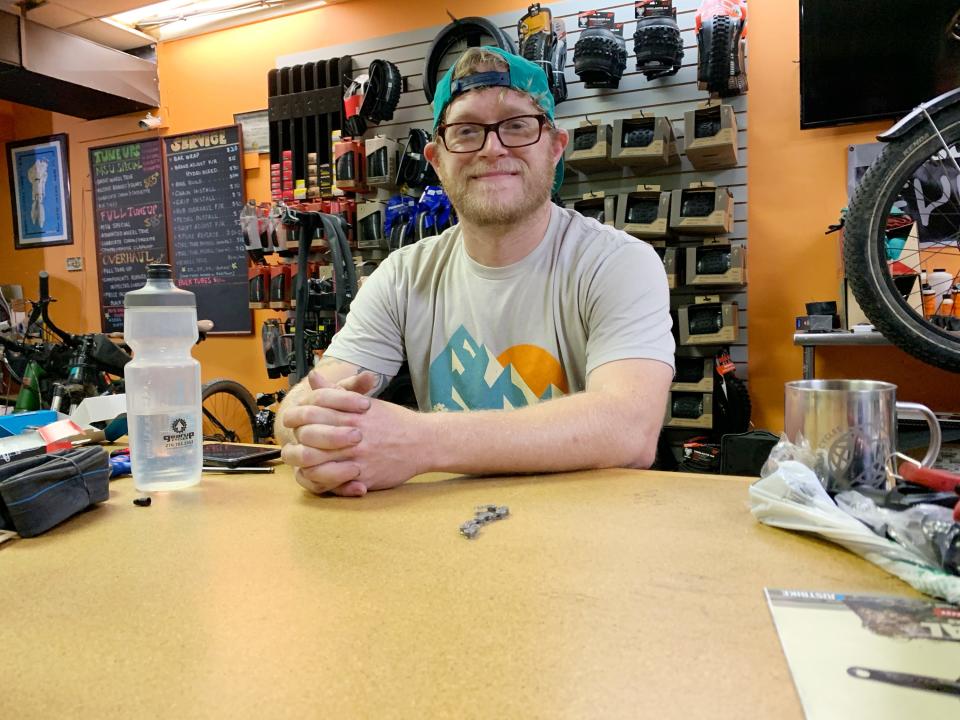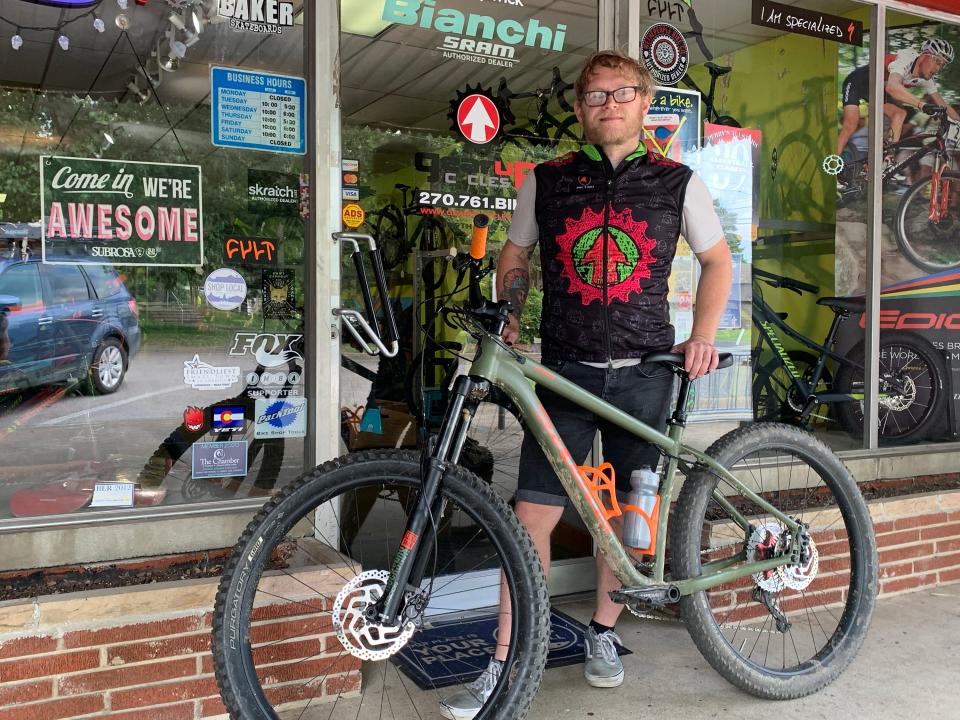In the market for a bike? Here's what to look for and how much you can expect to spend
The cycling landscape has changed a lot since kids rode around on Western Flyers, the iconic, budget-friendly, single-gear bike of choice for a generation of American youngsters.
One thing hasn't changed: Biking usually enjoys a surge in popularity every summer – thanks in part to the Tour de France each July – but also due to longer days, warmer weather and the freedom that two wheels can provide.
But it's not just preteens wheeling around. Today, teenagers ride. So do seniors, along with every other age group. Commuters bike. So do families.
That has never been more true than during the COVID-19 pandemic, which sent people in search of socially-distant fresh air and exercise.

Demand spiked and supply dwindled as manufacturers (especially those with factories in China) temporarily shut down or reduced production and stores ran out of bikes in 2020. A year later, supply still hasn't fully caught up.
Picking the right bike for you
So which bike do you need, assuming you can find one in your price range and size?
That depends, according to Christian Goatley.
“In the bike industry, there’s not really a one-size-fits-all,” he says.
Goatley 38, is the manager of Gear Up Cycles, a specialty bike shop in Murray, Kentucky, which enjoys the good fortune of being located next door to bicycle-friendly Murray State University. He has been biking for more than three decades, including a few years on the racing circuit. Suffice it to say, he knows bikes and biking.
“The first thing is figuring out what type of riding you’re interested in doing,” he says. “And you need to get the appropriate frame size for the rider. If you buy (a bike) that doesn’t fit, you then you’re going to have a bad day on the trail. A bicycle is like anything else: if it fits you and you’re comfortable with it you’re going to use it.”
Where to begin

Goatley suggests that beginning bikers (regardless of age) or riders who haven’t been on a bike in a while consider starting out with a mountain or hybrid-style bike, which combines the flat handlebars, relatively upright body position and beefier wheels of a mountain bike with the lighter frame of a road bike. These generally feature stable footing and a surprisingly comfortable ride.
“They can be best until you figure out what type of riding you’re interested in doing,” he advises “You get a bigger tire clearance and most of the time they can be a more comfortable type of bike as far as the way you sit. You have more tire-to-the-road or tire-to-the-gravel (contact), which makes a lot of people feel more comfortable.”
Hybrids generally also have slightly narrower, less knobby tires than mountain bikes. What does that mean? "They might be a little more efficient to ride on the road or for light trail use," says Goatley.
Building a jack-of-all trades bike

Brian Szykowny would agree. Szykowny is co-founder/co-owner of Marin, California-based Hudski Bikes, a startup company whose timeline roughly followed that of the COVID-19 outbreak and rampage.
“It’s been a wild time to launch but we were lucky enough to get people outside and on our bikes with minimal delay,” Szykowny says.
Szykowny and co-founder/co-owner Will Hudson entered the market with the lightweight and nimble Doggler 12, offering the bike in mountain and hybrid configurations, as well as gravel, an increasingly popular genre that's equipped to handle a variety of road and trail surfaces. Not exactly one-size-fits-all, but close.
Szykowny and Hudson took a strong hand in the design of their first bike, the Doggler. And while Szykowny would likely agree with Goatley that no bike is a one-size-fits-all, they still took a stab at it.
When they were designing the Doggler, Szykowny and Hudson put “having fun on a bike” at the top of their design list. They started off with a quality build, low gears for easy climbing as well as a dropper seat post that makes it easy to get on and off and adjust your seat height while riding.
“It all adds up to a solid bike that will give you more smiles per mile than most,” he explains. “You can use our bikes for grocery runs, to flowy single-track rides, to overnight bike packing trips. It's a versatile platform and fills a broad spectrum of needs.”
Szykowny adds, “Will and I both come from a design background and we didn't rush things. I think more and more cyclists are wanting a car-free experience, along with a confidence-inspiring off-road bike. The Doggler does just that: pack a snack, go explore, curate a local lap that dodges roads, pushes your physical limits and connects you to nature at the same time.”
How much should you expect to spend?
In addition to where and how a bike will be ridden, price is another critical factor in a purchase decision.
From a cash outlay bottom-line perspective, specialty bike shops have difficulty competing at the cash register with Walmart and other big-box stores, a fact Goatley acknowledges.
However, what specialty shops lack in competitive pricing, they more than make up for in terms of information. He encourages riders to ask questions and to make a well-informed purchase.
Not all bikes are created equal, though they may seem that way – especially to a novice. But rest assured that while bike components like wheels, handlebars and drivelines (including gears, shifters and derailleurs, which move the bicycle's chain between rings) may appear similar across cycling categories and price ranges, they are not, says Goatley.
“Even our lower-end bikes have hydraulic disc brakes,” he explained, referring to a safety feature that has long been found on mid-range and high-end mountain bikes and has replaced rim brakes on road bikes in recent years. Think of them as ABS brakes, providing more stopping power for your bike.
“Everyone needs to be able to stop," Goatley says. "And having to take three fingers off the level at full speed compared to just one finger because of a hydraulic brake can make a huge difference. It can also result in less fatigue at the end of the day.”
Gear Up customers can expect to spend $600-$800 for a solid, entry-level bike, he says. The Hudski Doggler, which can be ordered directly from hudskibikes.com, carries a $1,999 price tag. That may sound expensive to a newcomer but it's actually relatively modest for a tech-savvy, multi-use, stiff lightweight bike.
Ask away
Goatley adds that one of the most valuable things available to his customers comes at no charge: information.
He’s happy to advise customers whether or not they roll out of his store with a purchase. It’s the critical link and spotlight advantage to dealing with a bike specialty shop, he says.
“I feel that it’s very, very important to speak with somebody and find out about appropriate sizing and other things,” he reasons. “A lot of the big-box stores sell products that can be oOK but they’re not specific about their sizing and sometimes with the assembly of the product itself (which may not be put together by experienced bike mechanics). There’s nothing wrong with that. It’s just a different product than what we’re selling in a bike shop. And it’s very important that (customers) get a bike that is appropriately sized.”
Try it on for size

One way to begin checking whether a bike is the right size for you is to stand over it and pick up the bike, putting one hand in front of you and the other behind you. You want to see at least a couple of inches of clearance between the top tube and your groin. That can be important if you have to get down in a hurry.
And while your height is an important factor in picking the right size, it's not the only one. Your torso-to-leg proportions are another. So is gender. While it's not an absolute rule, women tend to have longer legs and shorter torsos, a difference reflected in bikes designed especially for them. (These bikes are often referred to as WSD, or women-specific designs.) In addition to a shorter top tube, they also often come with narrower handlebars and seats designed for a woman's pelvis.
Buy a helmet

One thing everyone agrees on is the importance of wearing a bike helmet. It is beyond question that they save lives and help avoid injuries.
“If you ride bikes, you'll eventually hit the ground,” Szykowny points out. “A helmet has saved my brain on a number of occasions and its importance is paramount.”
Goatley concurs: “It’s just a good idea. You get in the car, you put the seat belt on. You get on the bike, you put the helmet on. Find something that’s comfortable. Find something you like. And wear it.”
Gary Garth has biked, camped, fished, hiked, canoed, kayaked, hunted and occasionally been lost in most states and a few countries. More at www.garygarth.net.
Contributing: Jayme Deerwester, USA TODAY
This article originally appeared on USA TODAY: Buying a bike? Here's what you need to know before going to the store

 Yahoo Movies
Yahoo Movies 